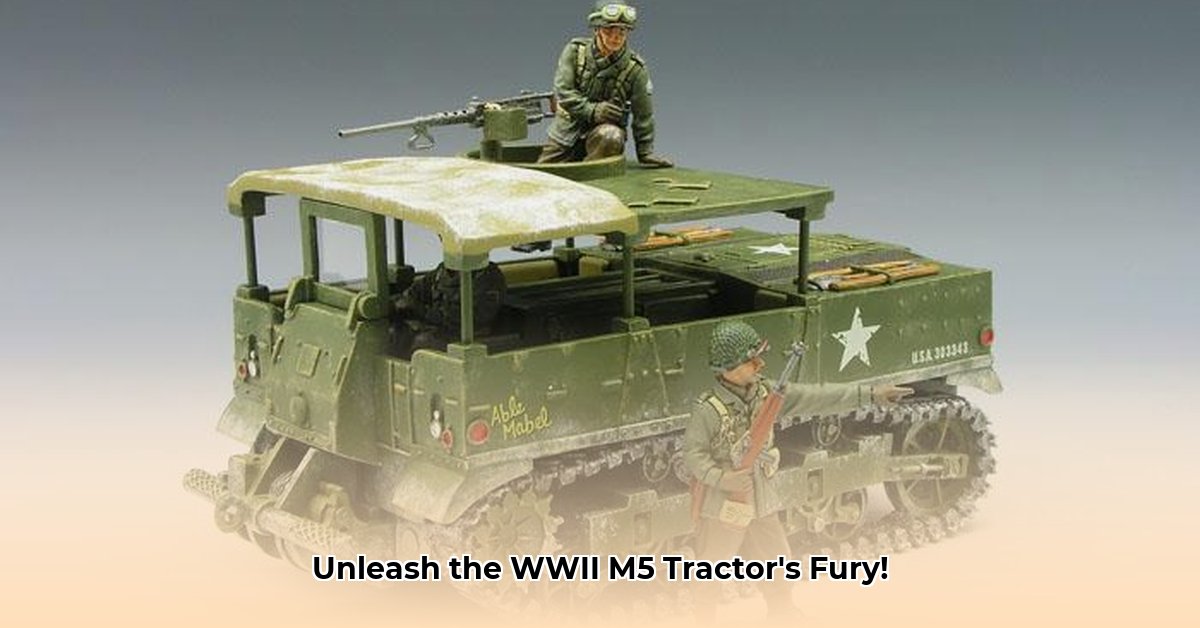
The M5 High-Speed Tractor, a vital piece of WWII machinery, wasn't a revolutionary invention, but rather a clever repurposing of existing technology. Borrowing the chassis of the M3 Stuart light tank, already battle-proven, manufacturers like International Harvester and Allis-Chalmers rapidly mass-produced this workhorse to meet the urgent demands of the war. Its defining characteristic? Speed. Significantly faster than contemporary prime movers, the M5's agility played a crucial role in the rapid deployment of heavy artillery, potentially altering the strategic balance of many battles. For more on other significant wartime vehicles, check out this link to other tractors.
Variations on a Theme: Upgrades and Improvements
The M5 wasn't a static design; it constantly evolved. Soldier feedback led to several upgrades. The M5A1, for example, notably improved crew protection with the addition of a steel cab, a significant upgrade to the original open-top design. Further models – M5A2, M5A3, and M5A4 – incorporated refinements such as enhanced suspension for better rough-terrain handling and potentially increased towing capacity. The addition of a .50 caliber machine gun provided crucial self-defense capabilities, transforming the tractor's vulnerability on the battlefield. This evolutionary process demonstrates the impact of battlefield experience on design.
In the Thick of It: The M5's Role in WWII
The M5's primary role was the rapid deployment of heavy artillery. Its speed advantage was paramount in the fast-paced conflicts of WWII. An estimated 5,811 M5 High-Speed Tractors were produced, representing a significant contribution to the Allied war effort. While the exact numbers of each variant are still under research, the tractor's overall importance in the war is undeniable. Was the improved deployment of artillery, facilitated by the M5, a decisive factor in several key battles? The available evidence strongly suggests a substantial contribution.
Under the Hood: Technical Details and Specifications
While specific specifications varied slightly between models, certain characteristics were common. The M5 generally boasted a powerful engine enabling impressive speeds for its era, along with a rugged design capable of towing heavy loads across varied terrain. However, early models lacked armor protection, making them susceptible to enemy fire. Later variants addressed this deficiency with steel cabs and machine guns.
| Variant | Engine | Top Speed (approx.) | Towing Capacity (approx.) | Key Features |
|---|---|---|---|---|
| M5 | Continental R-670 | 30 mph | 25,000 lbs | Open-top design |
| M5A1 | Continental R-670 | 30 mph | 25,000 lbs | Added steel cab |
| M5A2 - M5A4 | Continental R-670 | ~30 mph | ~25,000 lbs | Further improvements, .50 cal machine gun |
(Note: These are approximate figures, as source data varies.)
Lasting Impact: A Legacy of Innovation
The M5 exemplifies effective wartime resource utilization. Its design process, constantly adapting based on battlefield feedback, is a testament to innovative engineering. Its influence extended beyond WWII, shaping future prime mover designs and leaving a lasting mark on military engineering. The M5 isn't simply a machine; it's a piece of history—a symbol of adaptability and the crucial role of engineering in wartime success. Few military vehicles demonstrate such practical adaptability and clear battlefield impact.
Three Pivotal Points:
- The M5's speed was a game-changer in the rapid deployment of heavy artillery during WWII.
- Continuous improvements based on soldier feedback resulted in several upgraded variants.
- Its design principles and lessons learned influenced future prime mover development.